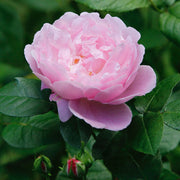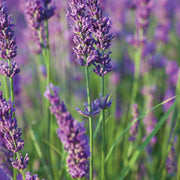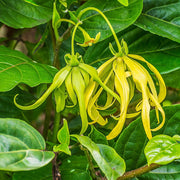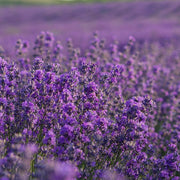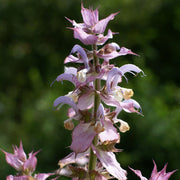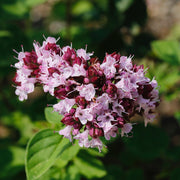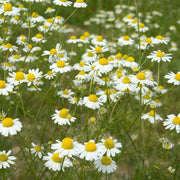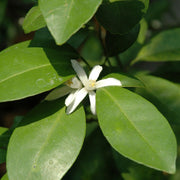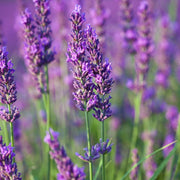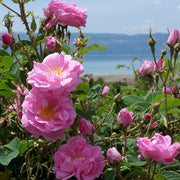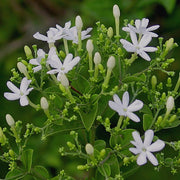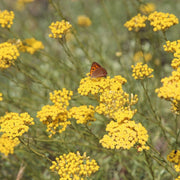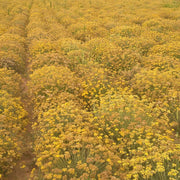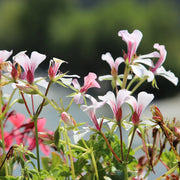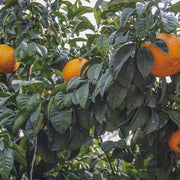Floral essential oils are distilled from flowers. That explains why many have rich, gorgeous flowery scents—like lavender essential oil! But some floral essential oils smell more herbal, such as thyme ct thymol essential oil.
Either way, they tend to have long-lasting “bouquets,” or aromas that stay strong even after they’re added to an essential oil blend.
In this post, you’ll learn what floral essential oils are used for, including how they inspire emotional wellbeing, why they’re so soothing in skincare recipes, and why they’re known as “heart notes.”
You’ll also discover why some floral essential oils are so precious (and expensive), and what you can do to blend affordably.
What can you use floral essential oils for?
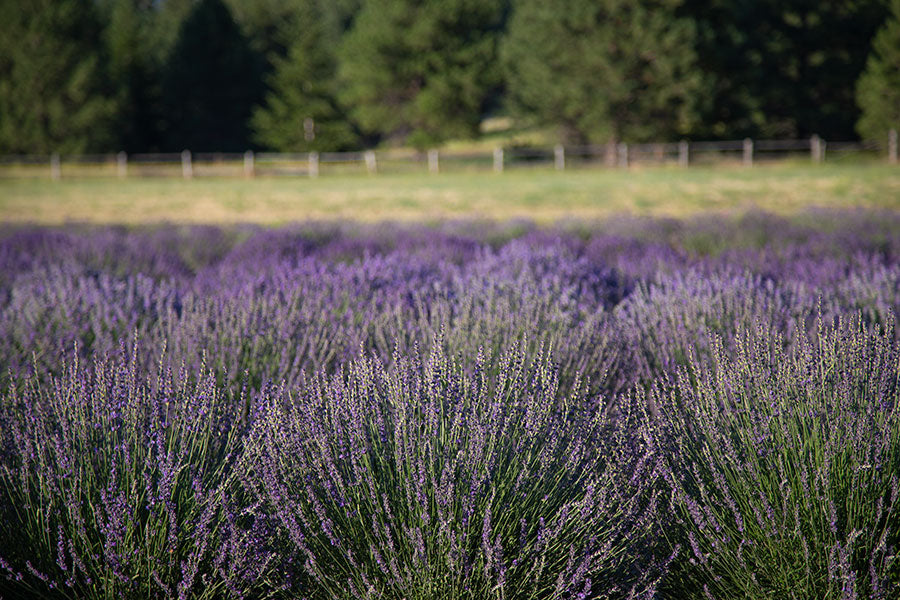
Emotional wellbeing
Popular floral essential oils accomplish this in different ways.
For example, lavender essential oil (Lavandula angustifolia) is rich in the components linalool and linalyl acetate, which makes it especially soothing if you’re nervous or restless. You can use lavender essential oil any time you want to relax, get some rest, or just feel less stressed during a busy day. Its calming properties make it one of the most popular essential oils in aromatherapy.
Melissa essential oil (Melissa officinalis) accomplishes similar effects with its citral content. It’s floral scent is a powerful ally if you’re feeling sad or can’t seem to stop worrying.
Jasmine absolute essential oil (Jasminum grandiflorum) is another popular floral for relaxation and stress relief. It’s one of the more sensual, heart-opening florals. Jasmine can inspire such a profound sense that all is right with the world, that you find yourself experiencing more self-love and forgiveness, and better able to connect emotionally with others.
Floral essential oils are so beautiful, they attune you to the beauty that’s present all around you. They bring expanded love for your environment, for yourself, and for the people in your life.
This is one reason they’re called “heart notes!” (You’ll learn another reason they’re called “heart notes” below.)
Skincare

The soothing, relaxing effects of floral essential oils also translate to caring for skin—even troubled or damaged skin.
Daily skincare
Lavender essential oil (Lavandula angustifolia), rose otto essential oil (Rosa × damascena), and neroli essential oil (Citrus aurantium var amara) are beloved in facial care recipes. They can help calm redness, reduce breakouts, and encourage the skin’s natural repair process—making them key allies against dry skin and daily environmental damage (like from sun or dry weather), and to keep aging skin healthy, supple, and youthful. Get hydrated by adding floral essential oils to your favorite unscented lotion or jojoba oil!
Again, they accomplish this in different ways. Like lavender, neroli essential oil contains soothing linalool. Rose essential oil, however, is rich in citronellol, geraniol, and nerol — monoterpenol components that contribute to its rejuvenating effects on the complexion.
Urgent skincare
Many floral essential oils can go one step further than daily skincare, being so potent that they’re used for soothing irritated, damaged skin.
Helichrysum essential oil (Helichrysum italicum) and German chamomile essential oil (Matricaria recutita) are often included in DIY blends to comfort small cuts and scrapes (after the area has been washed with soap and water). Researchers have cited helichrysum’s italiodones for these potential benefits, and German chamomile contains a cocktail of less-common molecules that make it one of the most unique, irreplaceable oils for urgent skincare.
Yarrow essential oil (Achillea millefolium) is also an excellent choice for damaged skin.
If you’re also looking to purify your skin, try thyme ct linalool essential oil (Thymus vulgaris ct linalool) or sweet marjoram essential oil (Origanum majorana). These floral essential oils not only help reduce breakouts, but can continue to protect damaged skin after the area has been washed with soap and water.
Heart notes
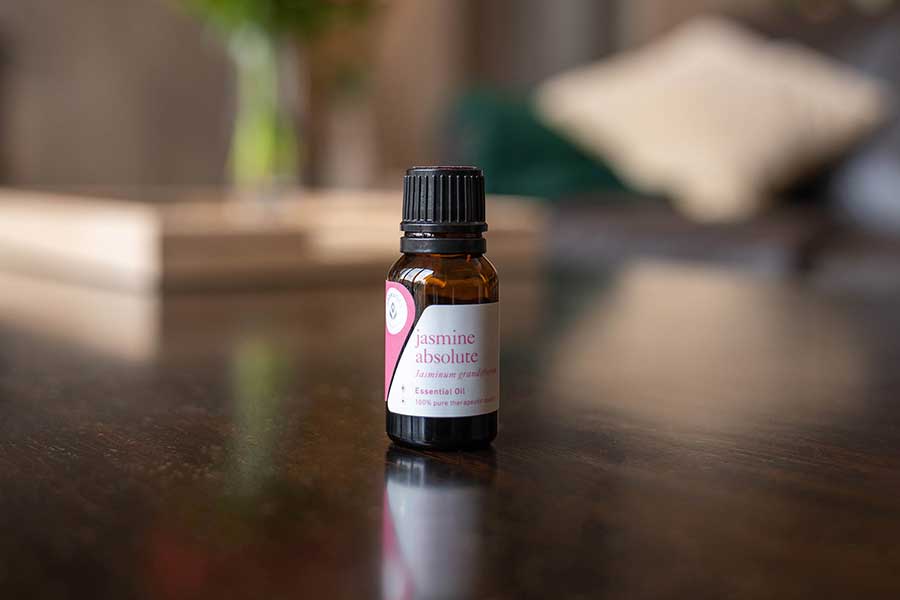
We mentioned above that floral essential oils are known as “heart notes” for the way they help open your heart.
What’s the second reason? They’re aromatically rich, giving a blend “heart.”
A lot of floral aromas fall somewhere in the middle of the “aromatic spectrum.” They’re not bright and sparkly top notes (like lemon and other citruses). And they’re not deep, earthy base notes (like patchouli and vetiver). They’re in between.
If you have a blend with top and base notes, it sometimes seems as though you’re smelling two separate oils as opposed to a blend. They’re so different that their scents don’t combine easily. Adding several drops of a floral oil can “bridge the gap,” connecting the top and base notes to create a rounder, fuller aroma, and unifying the different scents into one.
It’s easy to see why natural perfumers love floral essential oils so much.
Learn to expertly blend top, middle, and base notes on our blog!
The price of floral essential oils
To distill floral essential oils, first the flowers themselves have to be harvested.
This is a delicate process for some plants.
For example, rose blossoms have to be harvested by hand. And it takes a HUGE number of blossoms to produce even a small amount of essential oil. It can take anywhere from 30 to 50 flowers to distill a single drop of rose oil. So imagine the amount of flowers in a 15 ml bottle!
Let’s put that in perspective.

1 ml equals approximately 25 drops of essential oil. So a 15 ml bottle contains approximately 375 drops.
It takes between 11,250 and 18,750 roses to produce a 15 ml bottle of rose otto essential oil (Rosa × damascena). And ALL of those delicate, fragile blossoms have to be meticulously harvested by hand!
Now the price tag for a bottle of rose otto essential oil makes sense!
Fortunately, the pricier floral essential oils usually have very strong aromas. Just one or two drops go a long way. You can also usually substitute a more common floral essential oil instead of a precious one. If your recipe calls for rose otto, try using geranium oil instead. If it calls for jasmine, lavender or Roman chamomile would be a great substitute.
Producers can also make floral oils more affordable by crafting absolutes and essential oil co-distills.
Floral absolutes and co-distills
Some floral oils can be produced by solvent extraction, which creates more affordable “absolutes.”
Rose absolute essential oil (Rosa × damascena) is a beautiful example.
Making rose absolute involves putting the flowers in a still with a solvent (such as hexane). When the solvent is removed, what remains is a concentrated waxy substance called “concrete”—it contains resins, waxes, and natural chemical components that are present in rose blossoms. The concrete is washed with alcohol, and then it’s distilled once again until all of the alcohol evaporates. What’s left is the “absolute,” an oily liquid rich in the natural fragrant and therapeutic components of roses!
Some distillers also craft co-distills of expensive florals with other oils that complement their aromas.
Co-distillation: When two different plant materials are distilled together, the resulting oil is a true combination of the two.
For example, geranium essential oil (Pelargonium graveolens var roseum) has a very floral, rosy aroma (although it’s not technically a floral oil—it’s distilled from leaves!—its scent is so flowery that many people group it with the florals). So geranium is often distilled with rose blossoms, creating rose and geranium essential oil (Rosa × damascena/Pelargonium × asperum).
Neroli and petitgrain are also often distilled together. In this case, these two oils come from the same plant. Neroli comes from the blossoms of the bitter orange tree, while petitgrain is produced from the leaves of the same tree. Putting the blossoms and leaves in the still together creates a gorgeous neroli/petitgrain essential oil co-distill (Citrus aurantium var amara).
Our top 10 floral essential oils
Not sure which floral essential oils to add to your collection? These are some of our best-sellers! While all of them can be used for emotional wellbeing, relaxation, and stress relief, some also have more specialized benefits like healing properties.
1. Lavender Essential Oil
Latin name: (Lavandula angustifolia)
Lavender’s bevy of uses have made it one of the most popular essential oils in the world! Use it for relaxation, calming stress, skincare, reducing breakouts, soothing irritated or damaged areas, and more.
2. Ylang Ylang (Complete) Essential Oil
Latin name: (Cananga odorata)
One of the most hypnotically relaxing oils in our collection! One drop is enough to help calm anxious feelings so you can rest.
3. Roman Chamomile Essential Oil
Latin name: (Chamaemelum nobile)
Chamomile (Roman) has a floral, fruity aroma that might remind you of warm apples. This oil is often used to calm spasms in muscles (especially the belly).
4. Spike Lavender Essential Oil
Latin name: (Lavandula latifolia)
With a fresher aroma and a more energizing presence than “true” lavender, spike lavender can soothe muscles and joints after a workout.
5. Clary Sage Essential Oil
Latin name: (Salvia sclarea)
Clary sage is a traditional favorite for women during their menstrual cycles, who sometimes include it in belly massage blends.
6. Thyme ct Linalool Essential Oil
Latin name: (Thymus vulgaris ct linalool)
Breathe in thyme ct linalool when you want to take deep, clear, relaxing breaths. It’s especially supportive during cold season.
7. Marjoram (Sweet) Essential Oil
Latin name: (Origanum majorana)
Massage sore, tense muscles with a marjoram (sweet) blend, bringing a fresh flow of warm energy where you apply it.
8. German Chamomile Essential Oil
Latin name: (Matricaria recutita)
Use chamomile (German) in blends to soothe sore, damaged skin, and to nurture muscles and joints with massage.
9. Neroli/Petitgrain Essential Oil
Latin name: (Citrus aurantium var amara)
This gorgeous co-distill is a must-have for natural perfumers! Along with offering a beautiful aroma, it’s also used in stress soothing blends.
10. Tulsi (Holy Basil) Oil
Latin name: (Ocimum sanctum ct eugenol)
Support strong, healthy immunity with tulsi oil! With its relaxing presence, it’s perfect for chilly nights during cold season.
How to use floral oils

Looking for recipes for your next warm bath, face wash, or flower spray bottle? Here are a few great recipes to make the most of your floral essential oils, like jasmine oil, roman chamomile oil, and clary sage oil:







